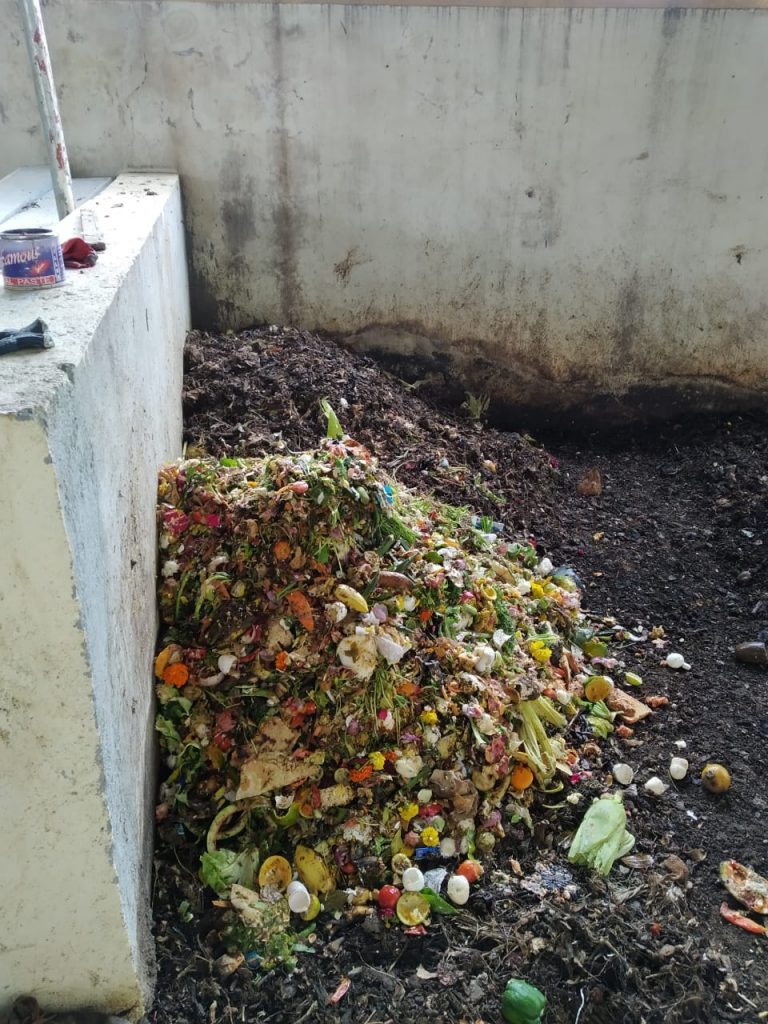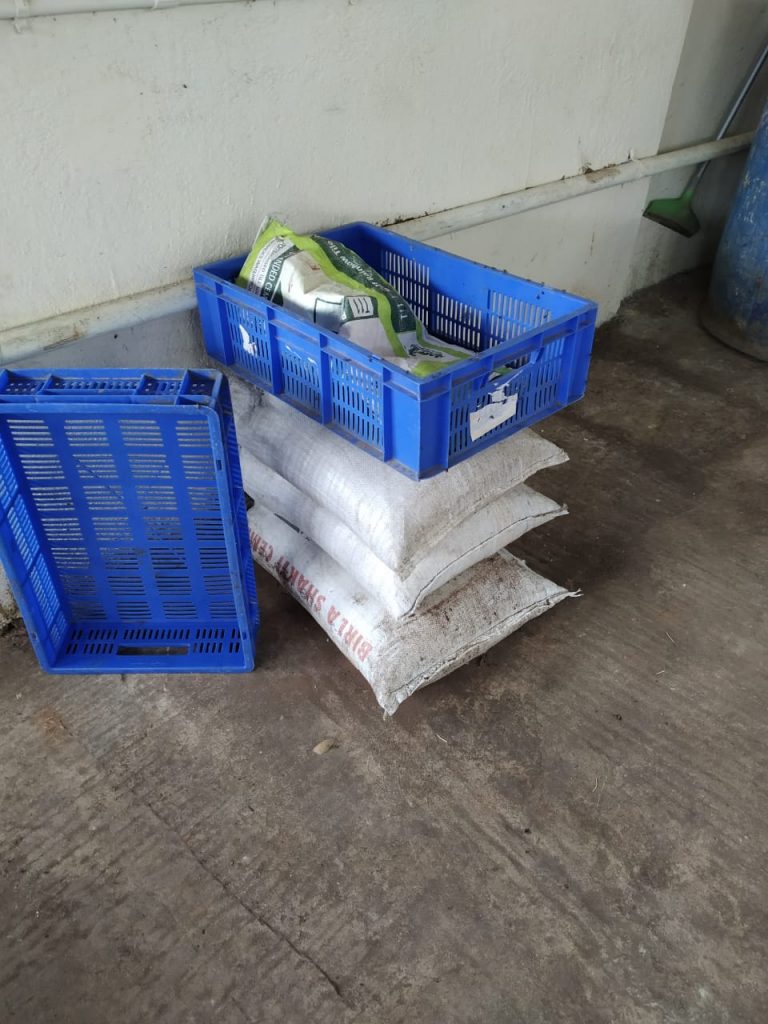
Garbage may not mean much for those who are blind to its worth, but for Bangalore’s MJR Pearl Apartments, Kadugodi, garbage is gold. This eco-conscious apartment complex turns 200 kgs of daily wet waste into 2 tons of compost every month.
How do they do it? With a resident community composting expert and supportive households that showed unity in reaching a shared goal of sustainable waste management and disposal.
The society, MJR Pearl was established in 2017 and sits on 5 acres of land and houses 413 units on its premises. They have allotted 50 square metres inside the premises to create a BBMP-mandated decentralised waste management facility.
Waste management scenario before composting
Prior to community composting, the society had a massive composting machine bought at a cost of Rs 8-10 lakh, but it had stopped functioning. Additionally, the society used to also spend Rs 40,000-50,000 on labour, power, maintenance, repair, and composting ingredients. After the adoption of a completely natural technique of composting, they get 100% organic compost with a singular cost for manpower, which is around Rs 12,000-15,000 per month for one compost handler.

Muralikrishna Pattaje, member of the society, IT professional and composting enthusiast, championed the green practices in MJR Pearl. Owing to his previous tryst with community composting, Muralikrishna was used to producing around 700 kgs of compost per month for six years. He moved into MJR Pearl, already armed with prior experience and skills to make the community composting operation a success.
“The managing committee at MJR Pearl is highly conscientious and supportive when it comes to hands-on waste management and disposal onsite. In fact, there was already 100% waste segregation among all the units. However, the wet waste was being disposed of by a vendor instead of being composted. Funding was not a big challenge because we didn’t invest in expensive in-vessel composting systems. We did everything ourselves and thanks to cohesive efforts of the residents and the MC, our community composting endeavour took off and is being carried out successfully.”
Our earlier composting machine was huge but all it did was crush the waste, not compost it. Moreover, since no air and sunlight were available; it created anaerobic conditions and foul smells, he says.

The planning stage
Figuring out how to compost at a large scale, selecting composting models and services and estimating the costs is always a major challenge for any society starting their own composting operation. “But at MJR Pearl, the planning went quite smoothly since the Managing Committee was already willing to lend help. Besides, I was familiar with the specifics thoroughly so setting up was easy,” says Muralikrishna.
The implementation
As there was no lack of space in the premises, the society has created a centralised wet waste management solution that uses natural aerobic composting. Segregated waste is collected from each household daily. It is then dumped into a rectangular enclosure with walls and left for composting with the right ratio of nitrogen (wet waste), carbon (dry cardboard, dry leaves or sawdust), water, air and sunlight. The pile needs to be rotated regularly for proper flow of air and sunlight so that there is enough heat and the microbes can grow. “We don’t use worms, yeast or chemicals for accelerating the process. The enclosure is a large rectangular room which is rain-proofed from the top, but is built to allow adequate air flow”, Muralikrishna explains. The room is enclosed by walls on two sides. The mix is kept for a month and rotated regularly for a month until the compost is ready. It is then filtered and the large chunks that remain are reused for the next batch.
The first batch prepared in May this year produced 300 kgs of compost. In five months, MJR Pearl has made 2 tons of compost. The entire process is handled using gardening tools for mixing and two plastic crates for filtering. No leachate is produced since it pollutes groundwater. At the same time, turning the pile ensures no foul smell is created and residents are not inconvenienced. A trained handler is appointed by the society to carry out the entire execution and maintenance.

Challenges faced
Initially, there were a few hiccups such as bad odour since it was the very first attempt. Later, this was resolved. The residents are not actually involved in the process but they help by segregating their waste responsibly. Overall, they are satisfied with the wet waste management system. According to Muralikrishna, in addition to funding and segregation, societies usually face labour problems as there is a limited pool of experienced and interested workers.
The compost produced at MJR Pearl is of good quality and is used for gardening. The leftover compost is sold to nurseries and distributed among residents. Muralikrishna also offers his expertise to societies looking to start their wet waste management initiative in-house. His intention is to expand composting solutions to other interested societies. “Composting is a green practice essential to creating a positive environmental impact and it saves residential societies a lot of money if done right,” he concludes.
Today, not a single bit of wet waste leaves MJR Pearl’s premises. The residents of MJR Pearl are happy campers, who contribute to the nation’s waste management problems and use best practices in compliance with the Solid Waste Management Rules. Fortunately, the availability of land and aeration within the premises and the determined efforts of a few like-minded individuals have created a success story that other societies can be inspired by and replicate in their own community.
Images courtesy of Muralikrishna Pattaje.
Disclaimer: Thank you for visiting our site. The information provided by MyGate (“we,” “us” or “our”) on https://www.mygate.com (the “Site”) is for general informational purposes only. We strive to provide our readers with accurate information that helps learn more about the topics. It is not intended as a substitute for professional advice. We do not accept responsibility for the accuracy of information sourced from an external entity or take personal/ legal responsibility for your use of this information.
Community Living